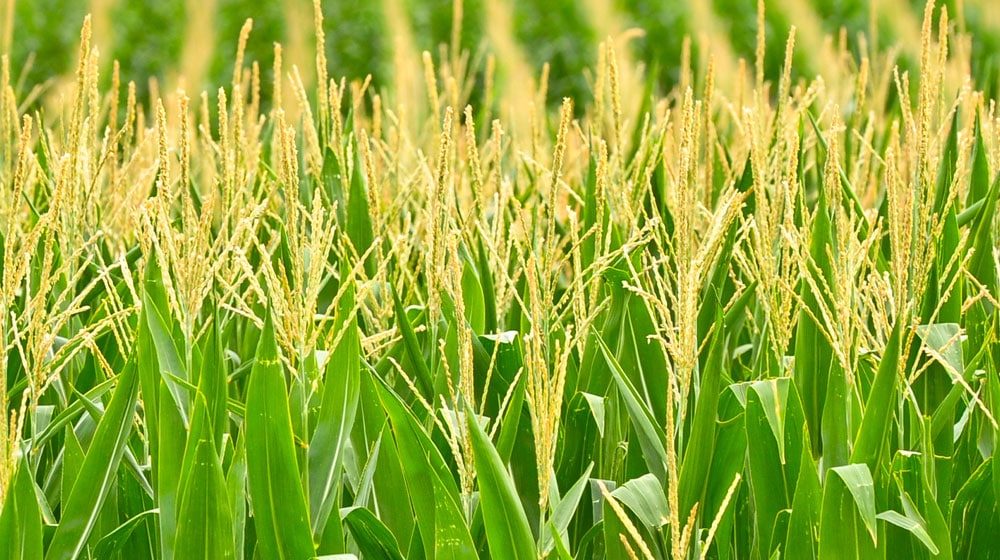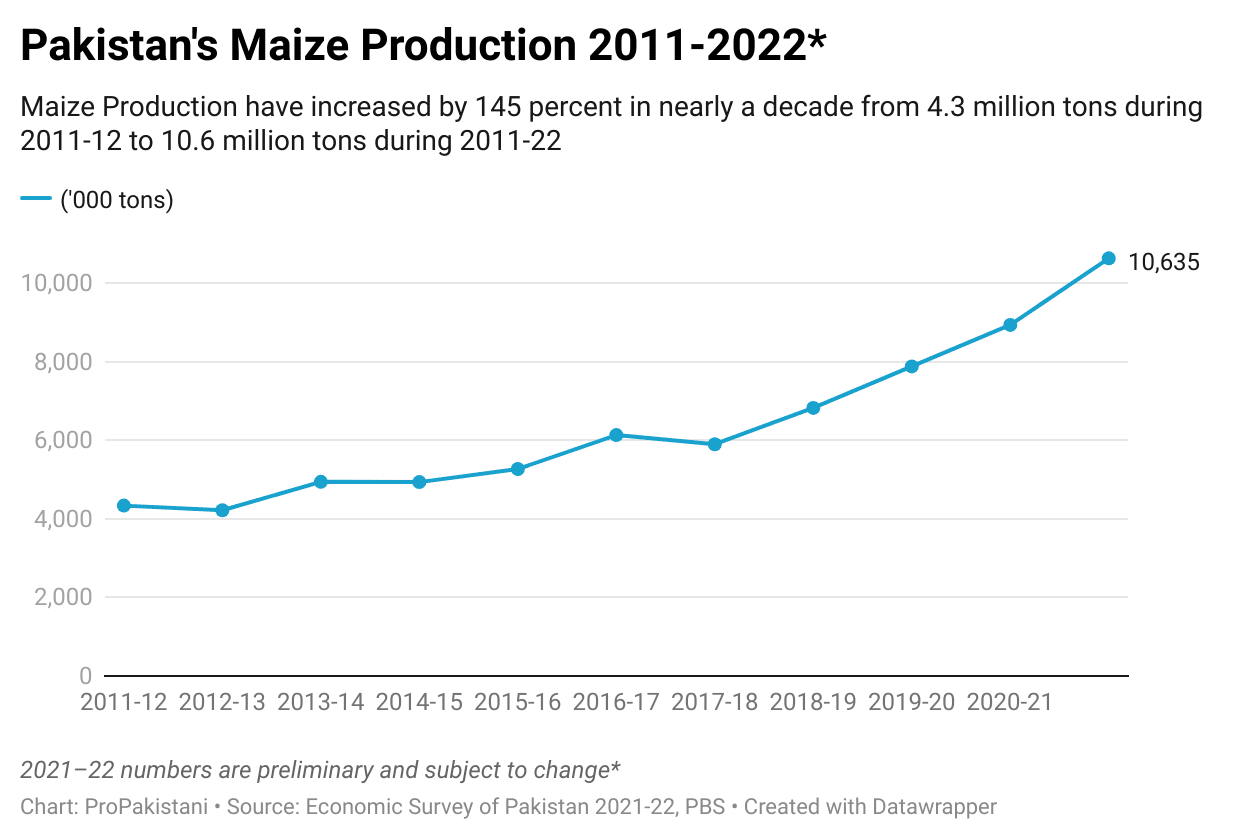Maize has been the one glimmer of hope in a broken agriculture sector with all other major crops either losing acreage and productivity or showing stagnant growth. Pakistan’s maize output has grown 4.5 times between 2000 and 2020 in the face of looming climate change challenges.
It has witnessed an estimated 145 percent increase in production in the last decade according to the data published by the Pakistan Bureau of Statistics and Economic Survey of Pakistan. It’s the third-biggest cereal crop and in addition to direct human consumption, its uses range from poultry, livestock, and fisheries all of which play a key role in ensuring Pakistan’s national food security.
Since the opening of the first maize research institutes of the country in Yousafwala (Sahiwal) and Pirsabak (NWFP) in 1971 and the introduction of spring maize cultivation in 1975, maize acreage and production have been growing steadily over the years.
A coordinated Maize and Millet Research Programme initiated the same year and simultaneous efforts by the private sector have brought us to the point where Pakistan has surplus stocks of maize to export. It’s one of the few instances where the government and private sector has jointly built something so immense from scratch, especially in the agriculture sector.
On the other hand, all other major crops have faced problems and farmers are struggling to keep up the productivity with a wide range of challenges from water shortages and floods, increasing input prices, changing climate and the idle and under-funded R&D infrastructure. It is understandable to wonder about the reasons behind the consistent increase in production when it comes to maize.
Developing the market
The primary driver behind the growth of any commodity is sustainable demand and fortunately for maize, it found a robust market. Poultry, one of the biggest sub-sectors with an annual turnover of Rs. 1500 billion and 10-12 percent annual growth, has been the key recipient of maize grain.
An estimated 65 percent of Pakistan’s production goes to providing poultry feed while 15 percent goes to wet milling, a process that mainly gives starch and other by-products like corn oil, gluten, fibre, and several important chemicals. All of these have widespread use cases from beverages, bakeries, processed food, oil, industrial alcohol, textile, paper, and pharmaceuticals.
Another 10 percent is utilized to produce cattle feed while the little of what’s left is used for human consumption. All of this points towards the fact that if we want the same success in other major crops Pakistan is struggling with, we need to develop their market and demand will take care of the rest.
It is unfathomable to expect an increase in cotton acreage and productivity when the textile sector is suffering from inflating energy crisis, uncompetitive tariffs, lack of skilled labor and the lack of innovation and value addition.
The same is true for oil seed crops where 75 percent of the consumption for edible oil is met with imported palm oil while the informal sector which constitutes desi ghee and domestic mustard oil cover 70-80 percent of the market. We simply lack the conducive infrastructure that can incentivize and promote the growth of oil seed crops. As long as there will be uncertainty on the market end, farmers will remain cautious in following the trend.
Research & Development
While the market demand played its role, the same can also be said about cotton, which has the biggest sector of the economy to back it, but the country is still failing to revive production to 2014 levels, let alone making any new breakthrough. The answer is research. The way the public and private sector has developed and promoted the modern maize hybrid seeds among farming communities, is unforeseen for any other crop, even cotton.
Industry-led efforts and Pakistan’s cooperation with China to introduce hybrids for rice and wheat are still in the early stages, but maize hybrid has already made its mark. Although, hybrid maize accounts only for 40 percent of the maize grown in the country, it contributes far more to the overall production due to high-yielding cultivars.
According to the farmers we talked to, they are often lucky to get nearly 40 maunds per acre with traditional varieties, but hybrid maize can easily guarantee 100 maunds per acre with the right practices.
Maize hybrids introduced by International companies like Bayer and Corteva have been central in maize’s success, stated Ali Hamed, Researcher at MNS University of Agriculture, Multan, and Project Officer with the Australian Center of International Agriculture Research. Recently introduced rice hybrids are being grown in some areas, but the success is yet far and the same is true for hybrids for wheat, he added.
He revealed that wheat hybrids in the works at the moment provide 75 maunds per acre yield at best and farmers are already getting up to 60 maunds per acre with current cultivars. It’s a norm to use the previous year’s grains as seeds but the same cannot be done with hybrids and farmers have no intention to buy new seeds every year for so little advantage.
Another issue is the stereotype associated with hybrid grains among the masses that they are harmful to human consumption. Maize is not mainly used as a staple food but the same cannot be said when it comes to rice and wheat so even if these hybrids come to market, they will have a hard time getting public acceptance unless the government needs to raise awareness.
Coming to the oil seeds crops, despite the best efforts of the research institutions, current cultivars of canola have lower yield capacity while the experiments for soybean adaptability still yield encouraging results. We were fortunate to have foreign companies coming and introducing proven hybrids when it comes to maize, but the rest is up to us. Unless the government prioritizes research and development and raise the standard of work being done in this area, consistent growth will remain a fantasy.



























